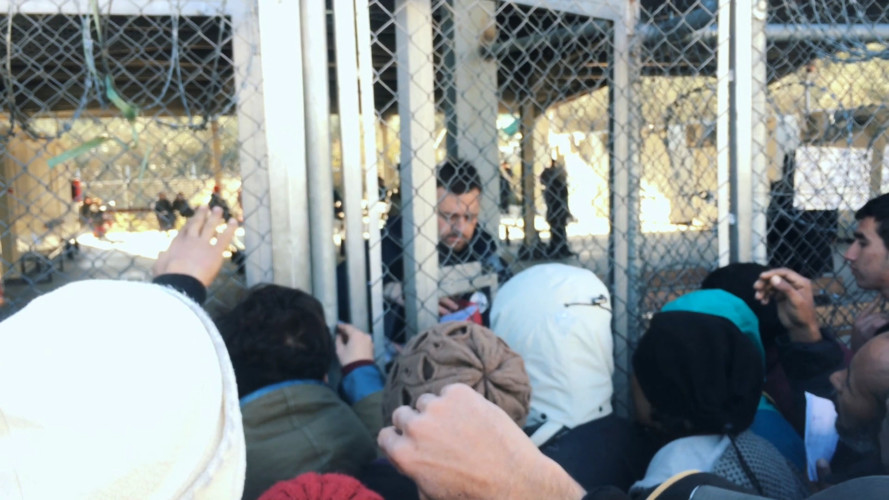
Europe’s struggle before one of the largest crises of our time
At the height of Europe’s migrant crisis in 2015, more than one million people sought refuge on the continent. Many of them were fleeing war in Syria and Iraq, and most of them were welcomed, even as their numbers overwhelmed Europe’s outer reaches.
Today, the winds have changed. Borders are closing, routes are becoming blocked, and the EU is paying countries like Turkey billions to keep the desperate on distant shores. This, as right-wing, anti-immigrant parties gain traction in polls across much of Europe.
As a result, the number of migrants who do make it is decreasing. But the challenges they face once they arrive, are increasingly on the up.
Shot on the Mediterranean’s migratory frontlines, and deep into nationalist Europe, Fortress Europe examines a continent being pushed to the brink, as it struggles to balance its response to the worldwide crisis that’s arrived on its shores.
WATCH
DIRECTOR Q&A | GERRY HADDEN
What attracted you to the story of Fortress Europe?
Living in Europe, the refugee crisis here is not an abstraction. On the streets of Barcelona you see refugees, asylum seekers, everywhere. They’re visible, and at the same time, on the margins of society. Their presence in Spain has been well tolerated, but that is starting to change with the surge in far-right politics. The news we read is filled with stories of asylum seekers in countries across Europe. They’re drowning in the Mediterranean, hiding in the woods in Serbia, living in camps in Calais, France. And more and more Europeans seem to be turning against their presence. Sometimes the refugees' stories end as tragically as the stories that set them on the road to begin with. Other times, they have happy endings. It is without doubt the biggest social issue in Europe today. And despite stricter border controls, no one seems to be able to control the flow of desperate people towards the continent.
Why was it important to tell this story?
The story is important because of a boy who drowned at sea.
What should we know about your filmmaking process?
Our storytelling process is pretty simple. Once we’ve signed off on a topic, we work hard to find characters that can bring the story to life, people who viewers will care about, who hold your interest, who make you want to know how the story is going to end. From there, we spend as much time with the characters as we can, hopefully enough time so that they’ll share what’s really important to them with us. While that work is going on, we’re simultaneously seeking out context from experts and people close to the issue. And on different sides of the issue, whatever it may be. Along the way, all sorts of comments and images begin to coalesce naturally around the major themes of the story. Building the story is like building a beautiful, living puzzle.
Did you make any unexpected discoveries while shooting?
Perhaps the most unexpected discovery we made during filming was learning just how difficult it is for people from other parts of the world to navigate the complexities of the European asylum system. It is not easy. There’s lots of red tape and even more waiting. If you don’t cross all your T’s you can derail your case. But when you’re traumatized by war or famine, and your entire life is in limbo, focusing on forms and paperwork can be maddeningly difficult. There has to be a uniformed process for dealing with large numbers of refugees, but as for the refugees themselves, they’re individuals who expect unconditional help. They are often sorely disappointed.
What do you hope your documentary will achieve?
My hope is that this documentary touches people, emotionally and intellectually. Europe is in a real bind and it needs fresh ideas and a new mindset to handle the refugee influx. Only a handful of nations, led by Germany, have been willing to take in large numbers of people. The issue has highlighted how divided the continent is. It’s helped the far-right make gains nearly everywhere. The fears of those Europeans shouldn’t be dismissed out of hand. Hopefully stories like ours can help spur discussion on how to explain to people worried about their identities that everything is going to be okay. That helping the down-trodden can be difficult but that everyone is better for it in the end.
DOCUMENTARY SELECTS
Click on any image for full screen slideshow.







DATA | THE ASYLUM INFORMATION DATABASE
The Asylum Information Database (AIDA) is a database managed by the European Council on Refugees and Exiles (ECRE), containing information on asylum procedures, reception conditions and detention across 23 countries in Europe.
EUROPEAN UNION | EU PROTECTS
In 2015, as migrants started arriving on the shores of Greece, the immediate response to provide safety and shelter was quickly overwhelmed.
Today, new efforts are in place to address the response, and bring safety and security back to the island’s community, including its migrants.
MORE FROM CGTN AMERICA
- Click to share on Facebook (Opens in new window) Facebook
- Click to share on X (Opens in new window) X
- Click to share on Instagram (Opens in new window) Instagram
- Click to share on LinkedIn (Opens in new window) LinkedIn
- Click to share on Reddit (Opens in new window) Reddit
- Click to print (Opens in new window) Print
 CGTN America
CGTN America






